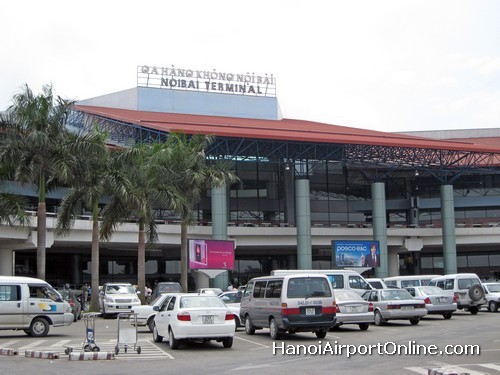A: This week we got a letter from Richard King, who last wrote to us in July. It’s always great to receive correspondence from our old friend Richard. We hope this edition of the Letter Box finds him well. Richard wrote to thank us for sending him Christmas and New Year greetings.

B: Richard says he has been a keen shortwave radio listener for over 40 years. He clearly remembers the first broadcast he heard when he was 12 years old. Since then, he has listened regularly to shortwave, learning a great deal in the process.
A: He shared some facts about his personal life: “I’m a 57-year-old professional businessman. I travel all over the world on business visiting my company’s regional offices in China and India several times a year. During my travels, I always take my short wave radio as it allows me to listen to the news from home via the BBC and news from around the rest of the world on other shortwave services. When I’m at home I continue those “travels” by listening to broadcasts from countries such as yours.”
B: Well, we really appreciate you taking time from your busy schedule to listen to our broadcast and write us, Richard. We’ll confirm your report with a QSL card. It will be a nice addition to your QSL collection, as it is a new design since you sent us your last reception report last year.
A: Richard told us: “Keep broadcasting on shortwave. There is an audience. Not everybody wants to use the internet. Over the years, my knowledge of the world has improved greatly because of shortwave. I also get to learn about your country. I have visited several countries on holiday as a result of the interest generated from shortwave programs.”
B: We surely will not abandon shortwave broadcasting, Richard, even though it’s difficult for this old-fashioned means of communication to compete with modern media. We receive letters from new listeners every month and we know we are serving a large number of DX’ers worldwide. They listen to shortwave not only for information about Vietnam but also out of a passion for DX’ing. We’ll continue on the air as long as there are listeners.
A: From Nigeria, our regular listener Sanusi Isah Dankaba asks “Does Vietnam have diplomatic relations with Nigeria?” and “How many domestic and international airports are there in Vietnam?”
B: Vietnam and Nigeria established diplomatic relations in 1975. Our relationship has been strengthened through the exchange of high-level delegations and agreements signed between the two countries. Viet Nam and Nigeria signed a trade agreement in 2001, creating a legal basis for boosting their economic and commercial ties. Bilateral trade has seen positive growth in recent years. Last year’s two-way trade turnover was more than 200 million USD, an increase of 18% compared with 2011. Vietnam exports to Nigeria mainly garment and textile products, computers, electronic devices, automobile parts, seafood, and rice. We import dried cashew nuts, cotton, wood and wood products, and liquefied gas.
A: Last month, Niger’s Minister of Communication, New Information Technologies and Culture Salifou Labo Bouche visited Vietnam to strengthen the two countries’ information and communication cooperation. The ministers discussed links in information technology (IT), including software and IT services, production of computers and electric and electronic appliances, human resources training, and network security.
B: That’s an introduction to the Vietnam – Nigeria relationship. We’re going to tell you briefly about Vietnam’s airports to answer a question by Sanusi Isah Dankaba of Nigeria. Vietnam has 22 airports including 8 international airports. Airport capacity increased from 6 million passengers in 2000 to 52 million last year. In addition to the state-owned Vietnam Airlines, which now handles 40 percent of the passenger market and over 20 percent of the cargo market, Vietnam has several private airlines - Vietjet Air and the foreign-invested Jetstar Pacific.

Noi Bai International Airport
|
A: In terms of infrastructure, the current development plan calls for 25 percent of airports to be capable of receiving big airplanes like the Boeing 777 and 747, and 45 percent capable of receiving A320 and A321 aircraft. The first-class airports, which play an important role in Vietnam’s economic, political and national defense development, include Noi Bai airport in Hanoi, Tan Son Nhat airport in Ho Chi Minh City, and Cam Ranh airport in Khanh Hoa province in the central region. The rest are categorized as second-class airports.
 |
B: Tan Son Nhat airport in Ho Chi Minh City has a maximum capacity of 25 million passengers annually. In 2010, it handled 15.5 million. With an annual passenger growth rate of 15%, Tan Son Nhat will be overloaded by 2015. The flow of foreign tourists to southern Vietnam is increasing 15 to 20 percent annually. The government has approved a plan to build a new Long Thanh International Airport in the southern province of Dong Nai, approx 40 km northeast of Ho Chi Minh city. It is scheduled to become operational in 2020 and will serve over 100 million passengers annually.
A: You’re listening to the Letter Box on VOV. We’ve been answering a listener’s question about Vietnam’s airports. Now, let’s continue to read letters from other listeners. Toshiya Nishimura of Japan tuned in to our channel on April 17 on the frequency of 12020 khz. Toshiya said he received a strong signal with little noise. The good listening conditions made him happy as he listened to the Letter Box’s mention of listeners around the world, revealing VOV’s broad listener community.
B: Your report was detailed and precise and we surely will confirm it with a QSL card. This week, we acknowledge reception reports from Baldelli Odilio of Italy, Paul Heyes of Britain, Fumito Hokamura of Japan, Reiner Peuthert of Germany, and Bob Dodt Jr. of the US. We thank you for sending us your feedback and many beautiful postcards, showing us the scenery, lifestyle, and culture of your countries.
A: Our time is running out here on VOV’s Letter Box. Thank you for spending some time with us. Before we go, we’d like to remind you of our address: English section, Overseas Service, Radio Voice of Vietnam, 45 Ba Trieu Street, Hanoi, Vietnam. Or you can email us at: englishsection@vov.org.vn. You’re invited to visit us online at www.vovworld.vn, where you can hear both live and recorded programs. Good bye until next time!